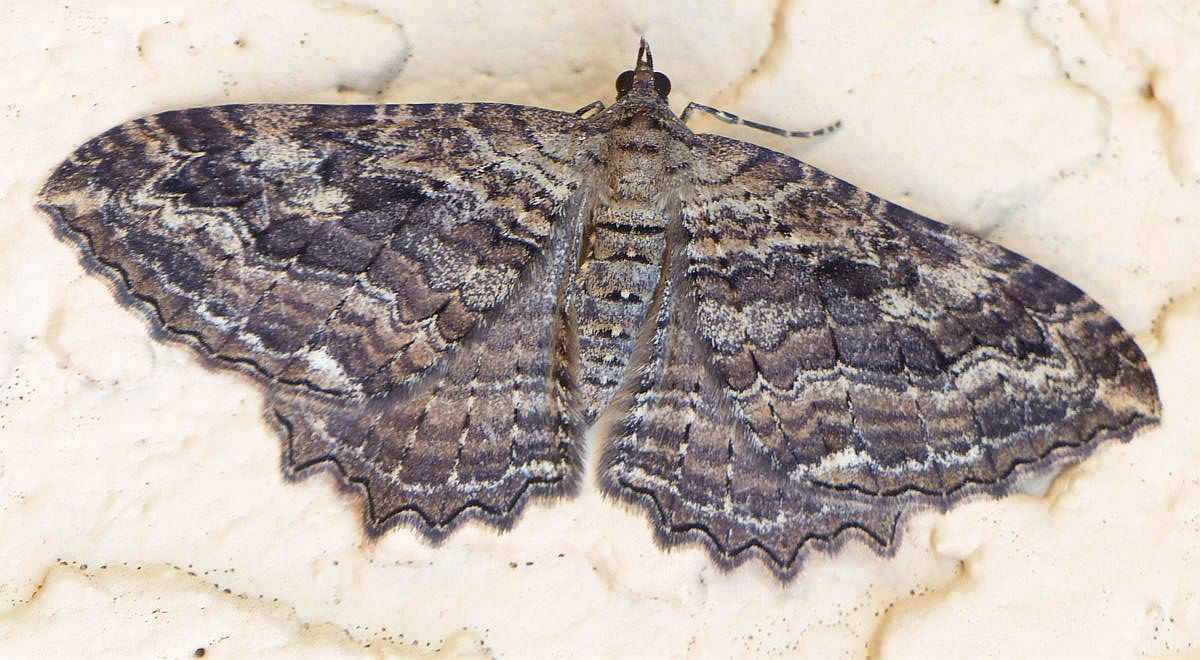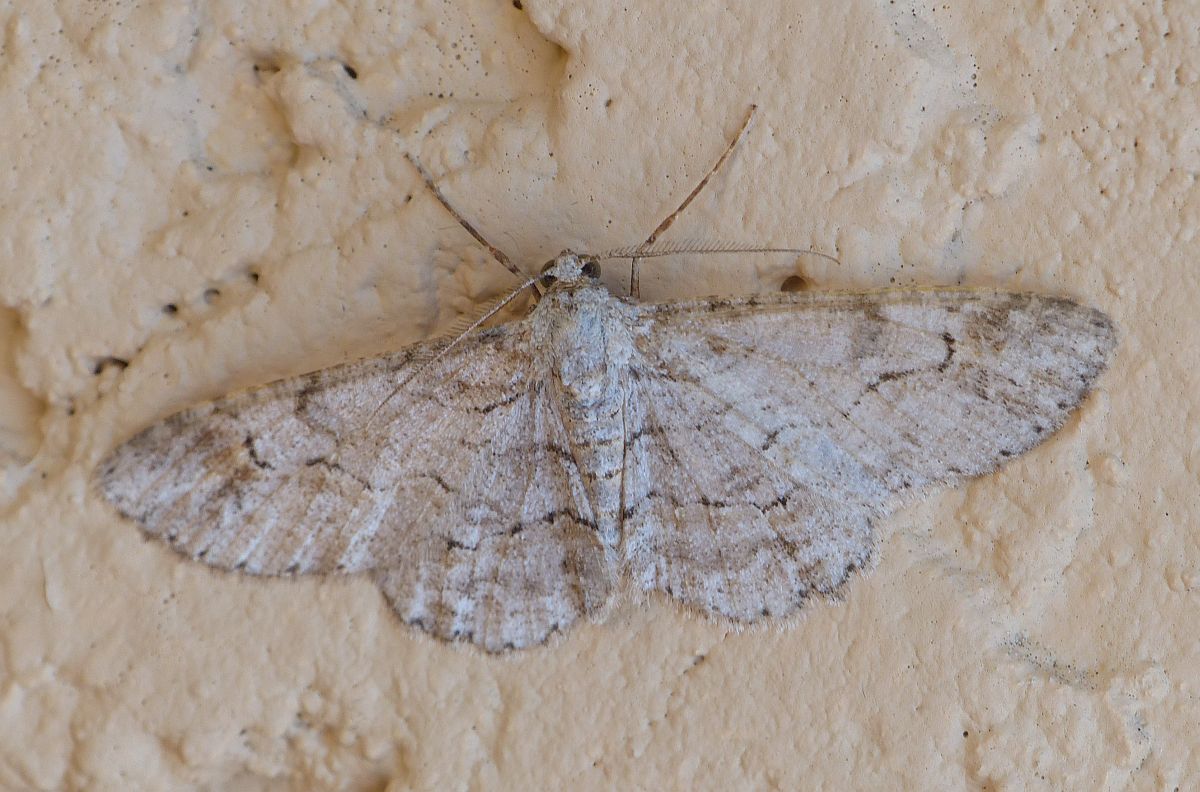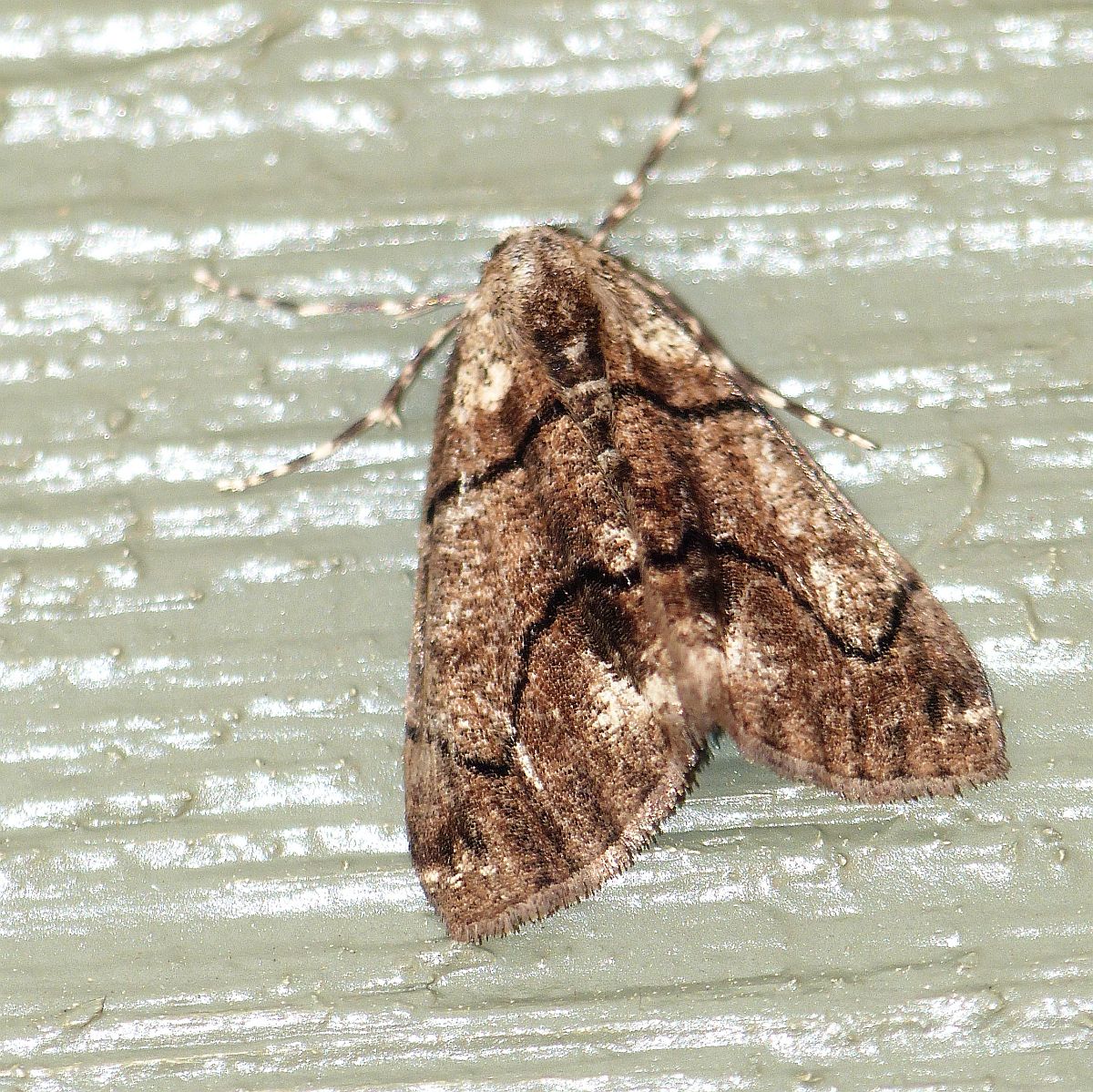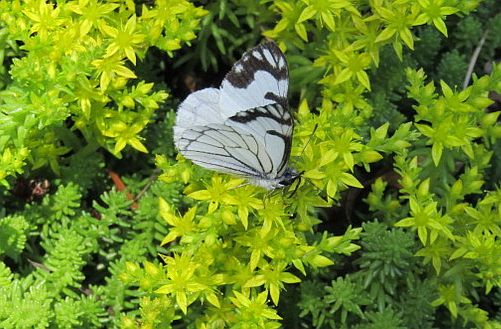July 16 evening
July 16 evening
This morning’s crop of Jochen Möhr’s moths were relatively easy to identify. Now we come to the more difficult ones.
Triphosa haesitata/Coryphista meadii is a notoriously difficult pair. The latter has several different forms, the most common of which can be terribly hard to distinguish from haesitata. On the outer margin of the hindwing of Jochen’s moth below, the fourth tooth is much smaller than the adjacent teeth. That’s probably good enough to label it safely as Coryphista meadii.


Coryphista meadii (Lep.: Geometridae) Jochen Möhr
The problem with Iridopsis is that there seems no general agreement as to whether I. larvaria and I. emasculata (also spelled emasculatum) are truly separate species, or whether they should be lumped as one. Jeremy Tatum writes: I believe they are quite different animals, and that Jochen’s is a slightly faded Iridopsis emasculata.


Iridopsis emasculata (Lep.: Geometridae) Jochen Möhr
The problem with Sicya is that there seems no general agreement as to whether S. macularia and S. crocearia are truly separate species, or whether they should be lumped as one. Jeremy Tatum writes: Unlike the case for iridopsis, I have no opinion one way or the other. In looking at published pictures of aduilts and larvae, I see conflicting evidence. In the adults, there seems to be no consistent reliable feature for telling one from the other, so I would say they are all one species. On the other hand, there seem to be two distinct caterpillars, suggesting that they are separate species. I’ll label Jochen’s moth with an either/or.


Sicya macularia/crocearia (Lep.: Geometridae) Jochen Möhr
The next one presents no particular identification problems – I just accidentally missed it out in this morning’s posting.


Gabriola dyari (Lep.: Geometridae) Jochen Möhr
After that splendid series of moths, it’s time for a butterfly. It is now mid-July, so it’s Pine White time. Here’s a male photographed by Judith Terry.


Pine White Neophasia menapia (Lep.: Pieridae) Judith Terry
